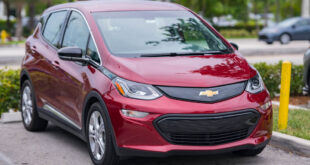Electric Cars for Urban Driving: Modern Mobility Electric cars (EVs) have become a transformative solution for urban transportation, offering sustainability, convenience, and efficiency. As cities grow and environmental challenges intensify, electric cars are increasingly the smart choice for navigating urban landscapes. This article dives into the benefits, considerations, and practical tips for adopting electric vehicles for city driving.
Why Electric Cars Are Perfect for Urban Driving
1. Environmental Benefits
Urban areas face high pollution levels, and EVs are instrumental in reducing greenhouse gas emissions and improving air quality. Unlike internal combustion engine vehicles, EVs produce zero tailpipe emissions, making them a cleaner alternative.
2. Cost Efficiency
Although the initial cost of purchasing an EV might be higher, the savings on fuel and maintenance over time are significant. Electricity is cheaper than gasoline, and EVs require fewer parts to service, such as oil changes or exhaust repairs.
3. Quiet Operation
One of the most noticeable features of EVs is their silent operation. In bustling urban environments, reduced noise pollution can significantly improve the quality of life for residents.
4. Compact and Efficient Design
Most electric cars are designed with urban driving in mind. Compact sizes make parking easier, while advanced features like regenerative braking enhance energy efficiency in stop-and-go traffic.
Top Features to Look for in Urban EVs
1. Range and Battery Life
City driving often involves short trips, making range anxiety less of an issue. However, ensuring your EV offers a range sufficient for daily needs without frequent recharging is important.
2. Fast Charging Capability
Urban EV users benefit from fast-charging stations that allow them to recharge quickly during errands or lunch breaks.
3. Smart Navigation
Many electric cars come with intelligent navigation systems that locate nearby charging stations and optimize routes to conserve battery power.
4. Compact Size
Choose a model with a smaller footprint to maneuver easily through crowded streets and park in tight spaces.
How to Maximize the Benefits of Electric Cars in Cities
1. Plan Your Routes
Take advantage of route optimization apps that consider traffic patterns, charging stations, and energy efficiency.
2. Use Off-Peak Charging
Many cities offer lower electricity rates during off-peak hours, making it cost-effective to charge your car overnight.
3. Join EV Communities
Participating in local EV groups can provide access to shared knowledge, discounts on services, and support networks for new users.
4. Stay Updated on Incentives
Governments often offer tax credits, rebates, or free parking for EV owners. Keep track of local policies to maximize these benefits.
10 Tips for Using Electric Cars in Urban Areas
- Install a home charging station for convenience.
- Use mobile apps to locate the nearest charging points.
- Keep a portable charger in your car for emergencies.
- Monitor tire pressure for optimal efficiency.
- Avoid overloading the car to preserve battery life.
- Pre-condition the cabin while the car is plugged in to save battery power.
- Use regenerative braking in stop-and-go traffic to extend range.
- Schedule regular software updates for your EV.
- Park in shaded areas to protect the battery from extreme heat.
- Familiarize yourself with public charging etiquette.
10 FAQs About Electric Cars for Urban Driving
- Are electric cars cheaper to maintain than gas-powered vehicles?
Yes, they have fewer moving parts and lower maintenance costs. - What is regenerative braking?
A system that converts braking energy into electricity to recharge the battery. - Can EVs handle heavy urban traffic?
Absolutely! EVs are designed for stop-and-go conditions, often with features like regenerative braking. - How long does it take to charge an electric car?
Charging time depends on the type of charger, ranging from 30 minutes (fast chargers) to several hours (home chargers). - Do electric cars perform well in cold climates?
While cold weather can affect battery efficiency, pre-conditioning and battery management systems help mitigate this. - Are there enough charging stations in cities?
Many urban areas are rapidly expanding their charging infrastructure. - How long do EV batteries last?
Most EV batteries are designed to last 8–10 years or more, depending on usage and maintenance. - Is insurance for EVs more expensive?
It depends on the model, but some EVs qualify for discounts due to advanced safety features. - Can I use an EV for long road trips?
Yes, but planning is necessary to ensure access to charging stations. - Are electric cars truly zero-emission?
While EVs have no tailpipe emissions, their overall environmental impact depends on how the electricity is generated.
Conclusion
Electric cars are redefining urban mobility, offering an eco-friendly, cost-effective, and practical solution for city dwellers. Their ability to reduce emissions, navigate congested streets effortlessly, and provide a quiet driving experience makes them a top choice for modern urban lifestyles.
As cities worldwide adopt greener transportation solutions, investing in an electric car ensures you’re contributing to a sustainable future while enjoying a seamless urban driving experience. Start your journey today and embrace the future of mobility!
 oto car insurance used car repair
oto car insurance used car repair
